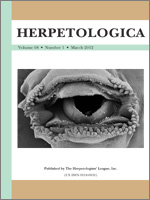The Brazilian Ministry of the Environment (Ministério Do Meio Ambiente, MMA) proposed defining priority areas for Brazilian biodiversity conservation in 2007, but to date, no definitions of priority areas for amphibian conservation have been developed for the Caatinga biome or the semiarid region of Brazil. In this study, we searched for “hot spots” of amphibians in these two regions and assessed whether the priority areas established by the MMA coincided with those suitable for amphibian conservation. We determined amphibian hot spots by means of three estimates: areas of endemism, areas of high species richness, and areas with species that are threatened, rare, or have very limited distributions. We then assessed the degree of coincidence between amphibian hot spots and the priority areas of the MMA based on the current conservation units. We analyzed areas of endemism with the use of a parsimony analysis of endemicity (PAE) on quadrats. The Caatinga biome and semiarid region showed four and six areas of endemism, respectively, mainly associated with mountainous areas that are covered by isolated forests and positively correlated with species richness. All areas of endemism coincided with one or more priority areas defined by the MMA. We identify 15 priority areas for amphibian conservation in the Caatinga biome and semiarid region, including the creation of new full-protection conservation units.
How to translate text using browser tools
1 March 2012
Amphibian Conservation in the Caatinga Biome and Semiarid Region of Brazil
Milena Camardelli,
Marcelo F. Napoli
ACCESS THE FULL ARTICLE

Herpetologica
Vol. 68 • No. 1
March 2012
Vol. 68 • No. 1
March 2012
amphibians
Complementarity analysis
parsimony analysis of endemicity
priority areas
species richness
threatened species




